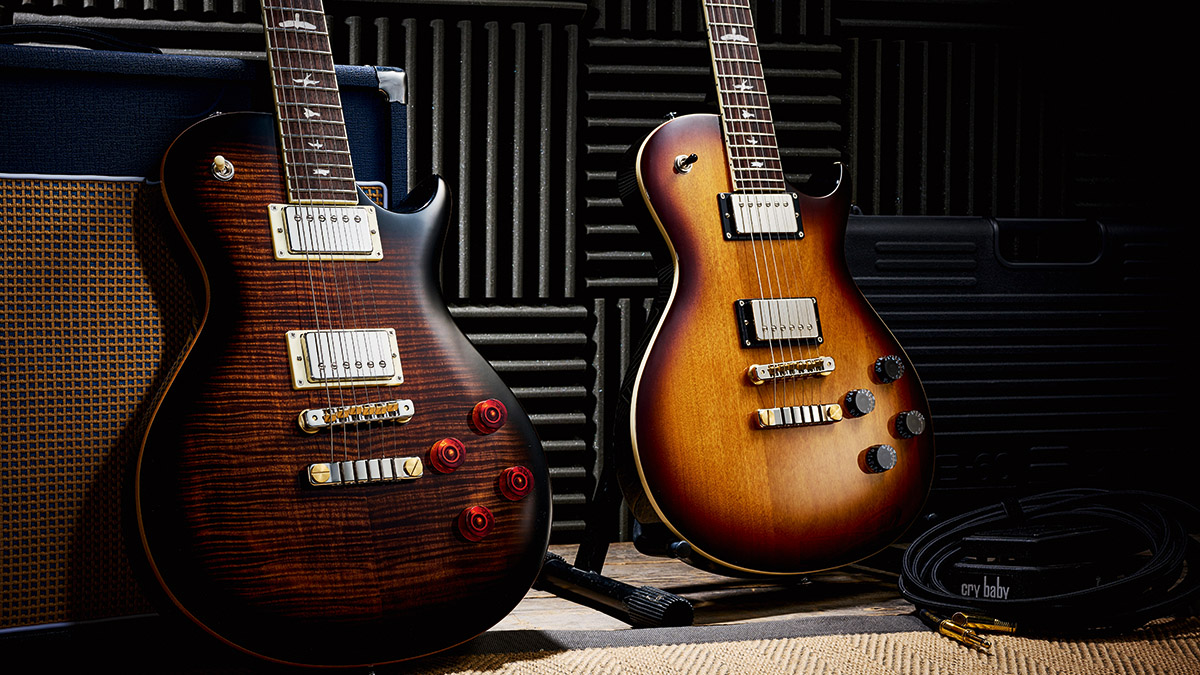Guitar World Verdict
This is a cracking pair of Singlecuts. From the classic ‘right’ weight to the well-balanced, not over-egged ’buckers and the useful single-coil voices, it’s hard to find fault. The craft is excellent, there’s not a hair out of place and both play exceedingly well.
Pros
- +
Great weight, build and playability.
- +
Superb bridge/tailpiece.
- +
Very balanced low-ish output humbucker voices.
- +
Very usable partial single-coil sounds.
Cons
- -
The Standard's plain top does look a little utilitarian.
You can trust Guitar World
It’s just over two decades since PRS introduced its Singlecut, the first electric guitar of its style for the then 15-year-old guitar company. The release achieved notoriety when Gibson objected.
The Singlecut was suspended from production until the lengthy legal wranglings resulted in a clean sheet for PRS; it didn’t infringe any legally protected aspects of the Les Paul.
However, compared with the now-classic double-cut Custom, the Singlecut has never achieved the popularity of its double-cut predecessor in terms of sales. But one consequence of this is that the original Singlecut recipe has seen a considerable amount of evolution over these past decades.
The double-cut McCarty 594 first appeared in PRS’s Core range in 2016, the Singlecut version in 2017, while a trio of well-received S2 594s followed in 2020, PRS’s 35th Anniversary year. Three years on and a pandemic in between, we now have three McCarty 594s in the SE line-up: a double-cut and the two Singlecuts you see here. So, what’s the fuss about?
Originally, the Singlecut used the PRS ‘halfway’ scale length of 635mm – midway between the Fender and Gibson standards – which then dropped to 622mm (24.5 inches), as preferred by Carlos Santana, for the ‘245’ models before the ‘594’ models adopted the ‘true’ old Gibson scale length (according to Paul Reed Smith) of 624.7mm (24.594 inches) – the imperial measurement being the origin of the name.
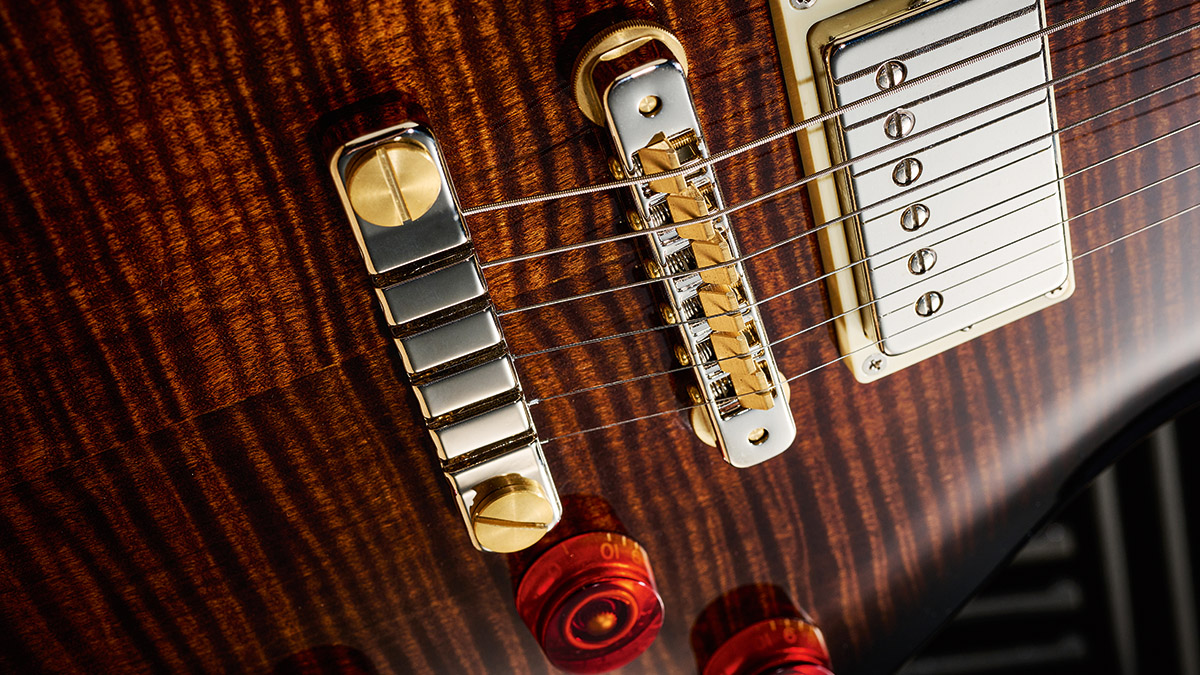
However, there’s plenty of the original Singlecut recipe left in these new models, particularly with the cleverly adapted outline shape and its hallmark scoop in the treble horn. The 594 recipe also comes with PRS’s take on the classic Gibson tune-o-matic and stud tailpiece setup that is typically well designed and engineered.
“The bridge is zinc, not an alloy,” PRS told us in 2020. “It is cast and minimally machined and nickel plated. The saddles, saddle screws, studs and thumbwheels are all raw [unplated] brass. The tailpiece is cast aluminum, but the studs and stud wells are machined – raw brass/raw steel respectively.”
Today, PRS confirms that the parts we see here are identical to those used on the USA Core and S2 models, with the exception that the posts/studs and wells are metric, not imperial. Classy.
Along with that scale length and the two‑piece bridge, the four-control layout on the 594 models is in the same diamond-shaped placement of Gibson, as opposed to the different diamond layout of the original Singlecut. The Singlecut always had the historically correct shoulder-placed toggle pickup selector switch. Today, even the double-cut 594s have a similar switch placement on the upper horn.
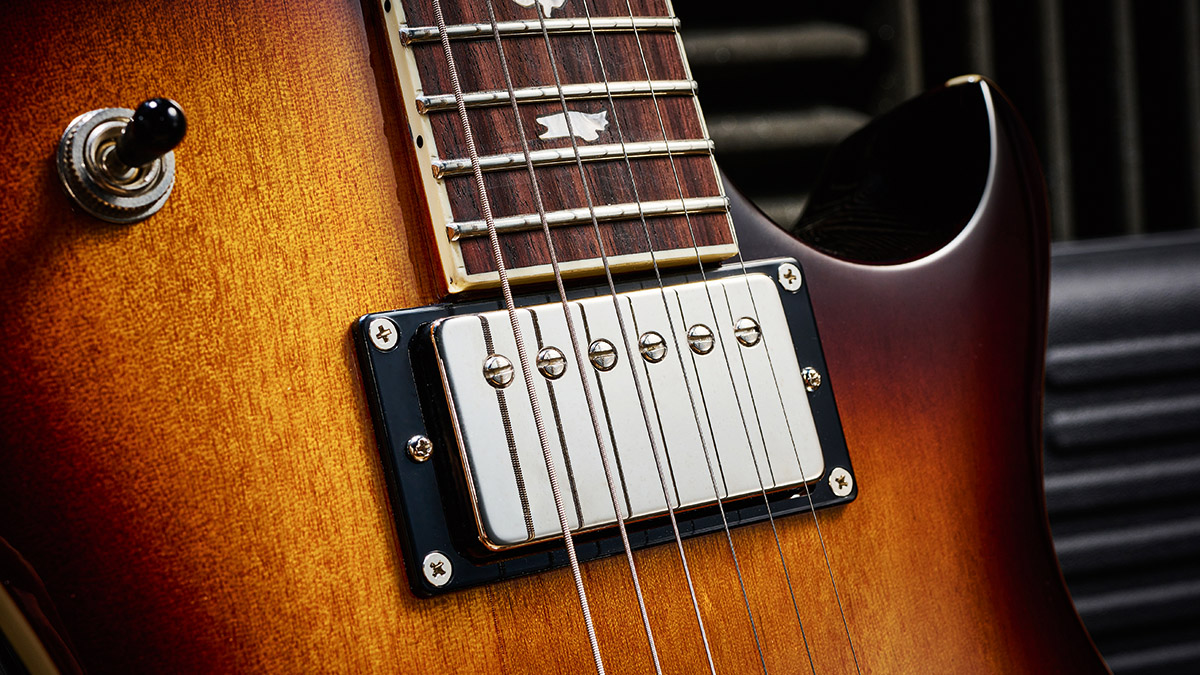
Our review pair shows off the moodier side of the colours on offer: the maple-topped SE is dressed in Black Gold Burst, with Faded Blue and Vintage Sunburst as options; the all-mahogany Standard is in McCarty Tobacco Sunburst, the only option being Vintage Cherry. These are top colours only, everything else is a single colour – opaque black on our maple-top and a semi-translucent deep brown on the Standard.
It’s very hard to fault the craft, but those back colours make it difficult to see what’s underneath. PRS’s spec list tells us the neck, for example, is of a ‘multi-ply’ construction. What does that mean?
“These necks are three-piece,” confirms PRS’s Jack Higginbotham, “so it’s three laminated pieces running all the way from the headstock to the heel. It is our normal neck construction method for SE set-neck guitars.” If you remove the neck pickup you’ll see there’s a full-width extension to the neck past the fingerboard end that glues into the body under the neck pickup.
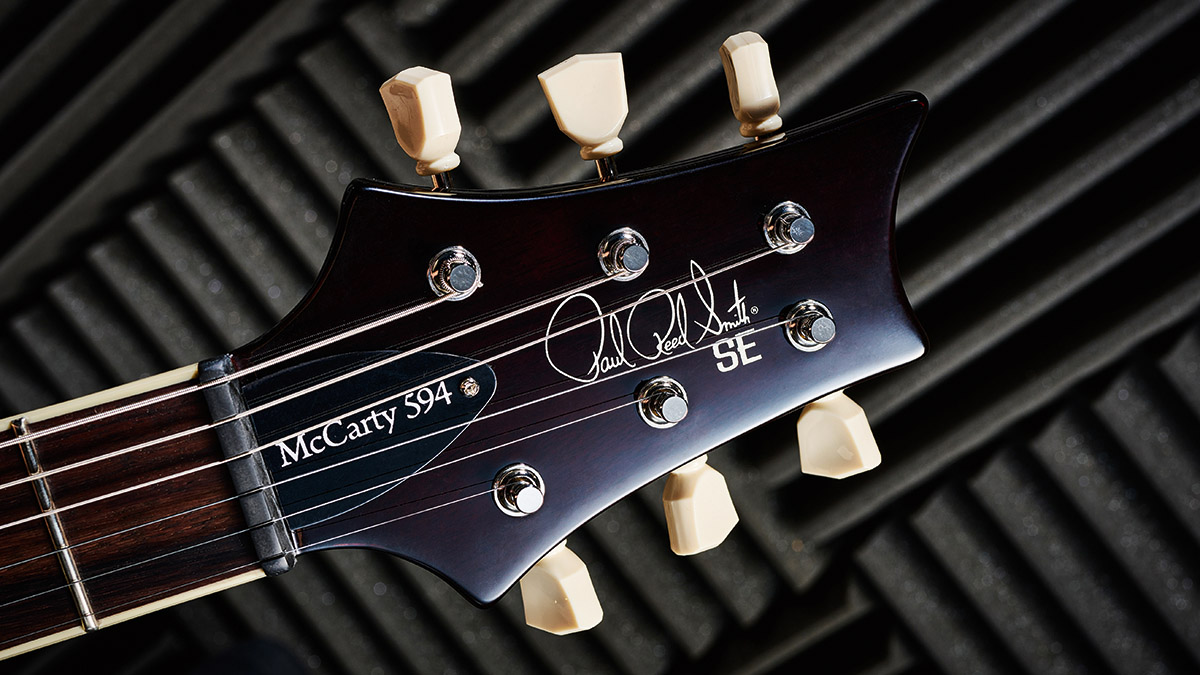
Both guitars advertise a ‘shallow violin’ top carve. This means the top is lightly convex, with a little dishing down to the edges, which are cleanly bound on the Standard and left natural on the maple-topped model. That figured maple you see is a veneer, although it’s laminated over a solid maple top.
The Standard’s all-mahogany construction is clearly visible through the simple ’burst. You can see that it’s a three-piece spread: there’s one join pretty much under the low E string and another smaller join by the bridge pickup’s tone control.
The Vintage Cherry finish would disguise this, so would other solid colours, especially black or gold. In sunburst, however, it looks a bit cheap and not very PRS-like, if we’re honest.
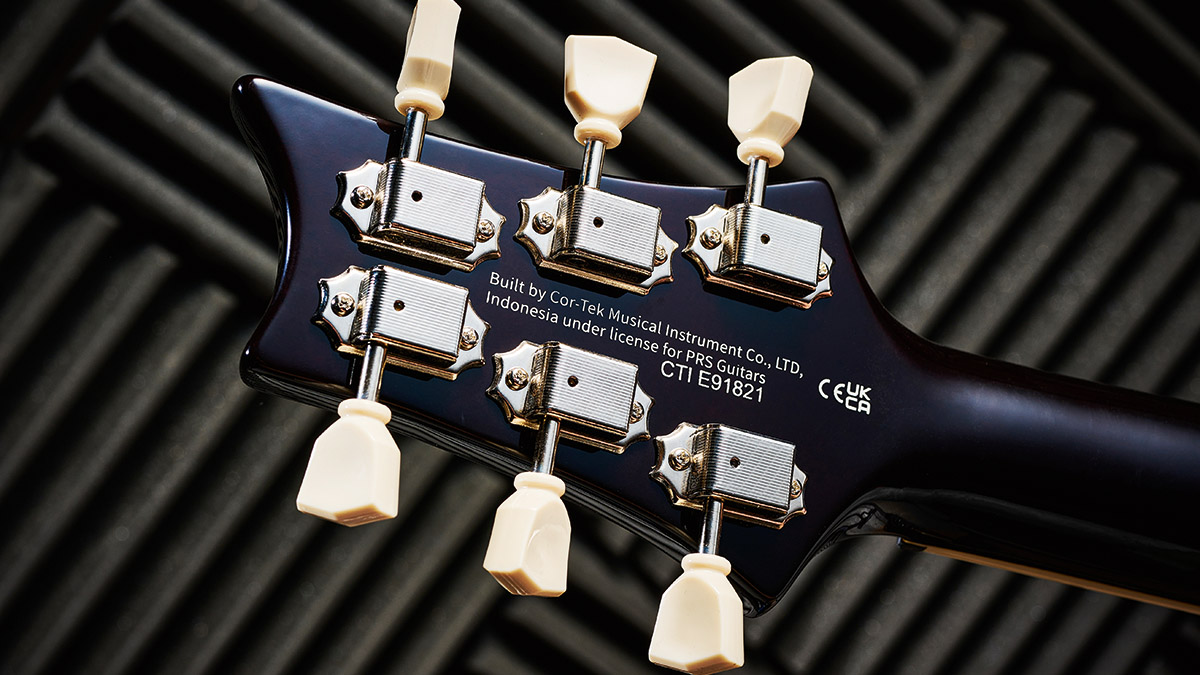
While neither guitar is as thick overall as a full-fat Singlecut (the overall body depth here is 53mm not 60mm), the rim depth is only slightly less at 49mm, which matches the Core model.
Due to the back finish, it’s hard to see exactly the thickness of the less contoured maple top, but we’d guess it’s around 11mm to 12mm, thinner than the top used on the USA Core 594, while the mahogany thickness is pretty much the same. It also means that the neck angle is flatter here.
As always, there’s a small ribcage contour on the back, although the rear cavity coverplate isn’t recessed – again reminding us this is a modern SE guitar.
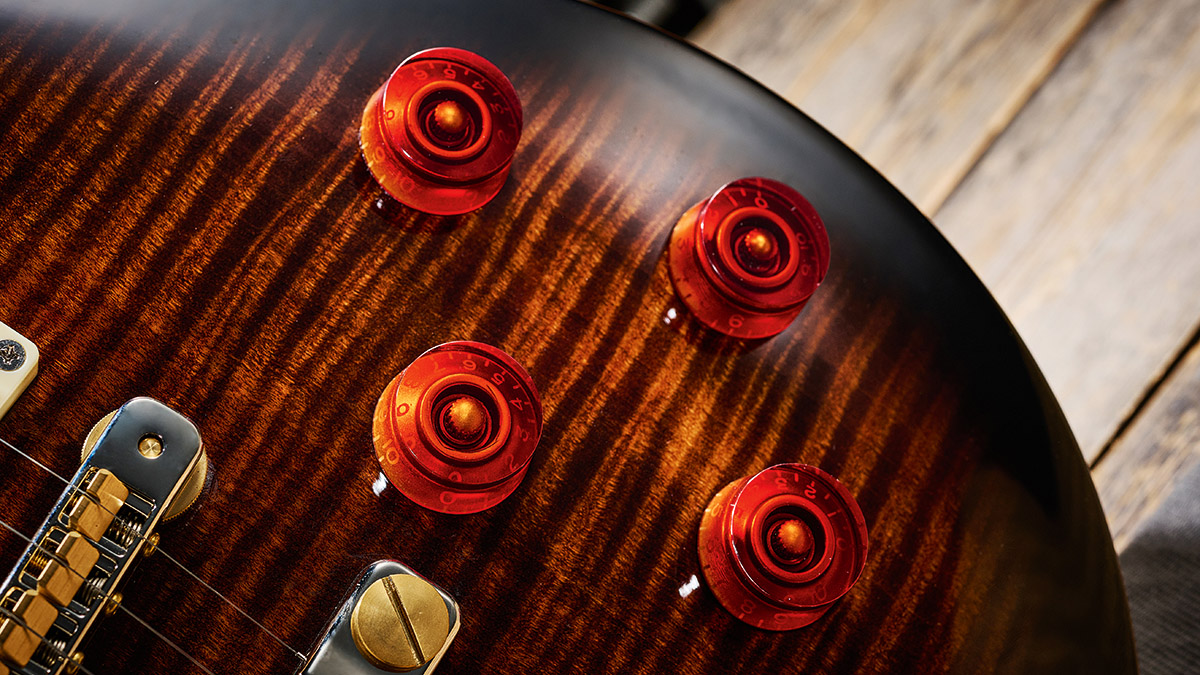
Feel & Sounds
We’ve played some weighty Singlecuts – our 2001 reference weighs in at 4.31kg (9.48lb), for example – but here the Standard clocks in at a near-perfect 3.6kg (8lbs). The maple-topped model is only slightly heavier at 3.82kg (8.4lb). Both guitars feel pretty chunky, too, something that’s enhanced by the neck profiles.
It’s the first time the SE line has featured the USA Pattern Vintage profile, which PRS describes as having “the same width measurements as the Pattern neck but is slightly thicker front to back and features an asymmetrical carve with a little less meat on the bass side of the neck toward the nut end and a little less meat on the treble side of the neck from the 12th fret to the heel.”
According to PRS specs, in width it’s the same as the Pattern and Pattern Thin, the same depth at the 1st fret as the Pattern, and the deepest of the bunch at the 12th at 24.99mm.
As we found with the SE DGT, a little is lost in translation: the asymmetrical aspect is very subtle and our callipers give larger dimensions, possibly accounted for by the thicker polyurethane finish used here. For example, measuring the width directly in front of the nut we get 43.67mm on both. In depth, the Standard measures 22mm at the 1st fret; the maple-topped neck is 22.9mm.
The 12th-fret measurement is 25mm on the Standard and 25.4mm on our maple-topped model. Whatever the intention, if you like big neck profiles then you’ll be at home here, although some of us long-time PRS players might be wondering what on earth is wrong with the good ol’ Wide Fat?
Both fingerboards are very nicely bound, though a little more rounding of the top edges of that binding wouldn’t go amiss, and the very tidy fretting appears to be of the same gauge as the SE DGT that most of us would call jumbo (2.79mm wide and 1.4mm high).
These guitars ship with 0.010-gauge strings and the setup is spot on, although the A and D string slots were a little tight on the Standard – nothing a couple of passes with a fret file wouldn’t cure. And with virtually zero string splay from the nut to the tuners, these are very in-tune, stable, gig-ready guitars after string stretching.
Irrespective of where they’re made or their cost, both are big-sounding single-cuts, but in typical PRS style what we hear is perfectly ‘produced’. The lows are big and rich, but they don’t overpower the mids, which sound creamy and only honky when you want them to – namely, when you really dig into a note or riff.
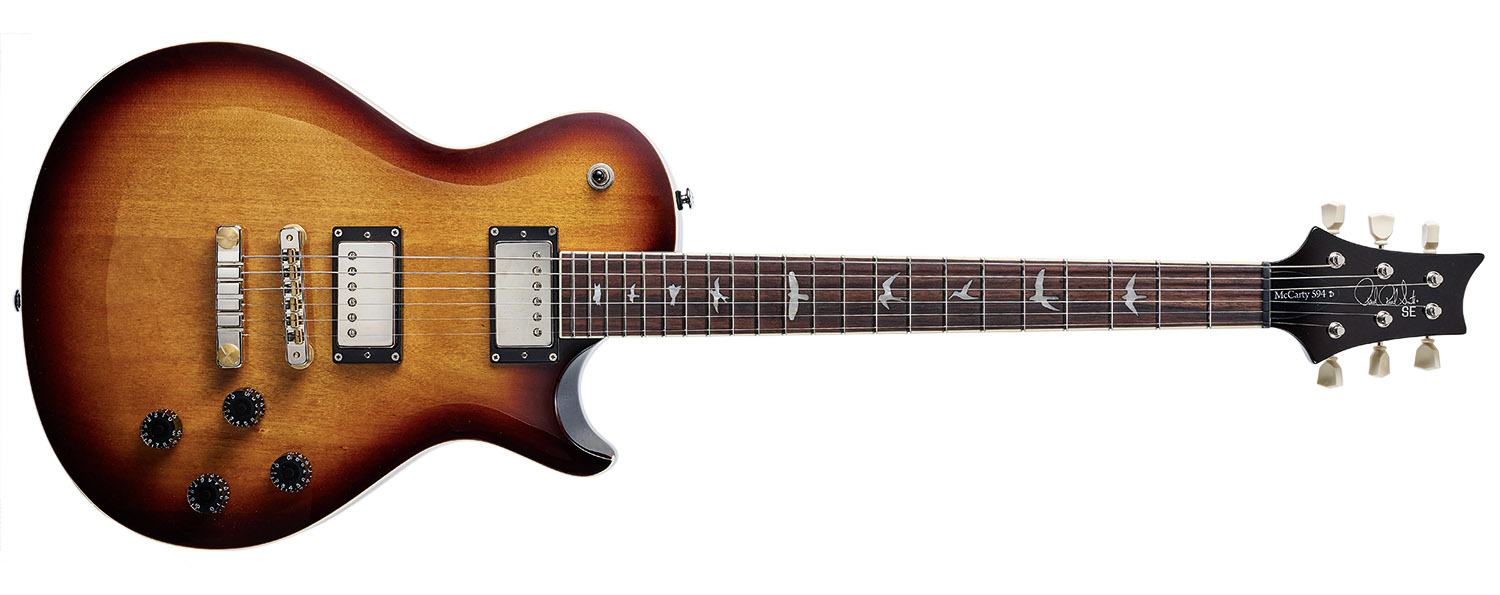
There’s a lovely touch-sensitive dynamic range, too: sweet to snarl. As we swap between the two, they’re really quite similar in voice, the Standard perhaps slightly softer sounding, while the maple-top model has marginally more cut. But on both it’s that tonal balance that comes through when played clean, crunchy or with plenty of gain.
As ever, we compared this pair with our references, a more expensive early PRS Singlecut and our Gibson Les Paul Classic. Now, they might sound different, but on a quality-of-sound level, well, what we’re hearing from this SE pair really doesn’t disappoint.
Not everyone wants single-coil voices on their single-cuts, but these ‘extra’ sounds just add to the fun. They sound anything but thin – and they clean up the lows and mids, adding a little sparkle on top. Aside from obviously providing a slightly lower-output ‘cleaner’ voice, kick in a level boost and you’re bang into that ‘Tele on steroids’ area. Reducing the volumes slightly does round the high end a little – which may be good or bad – and we can’t help thinking a simple treble bleed would help some players.
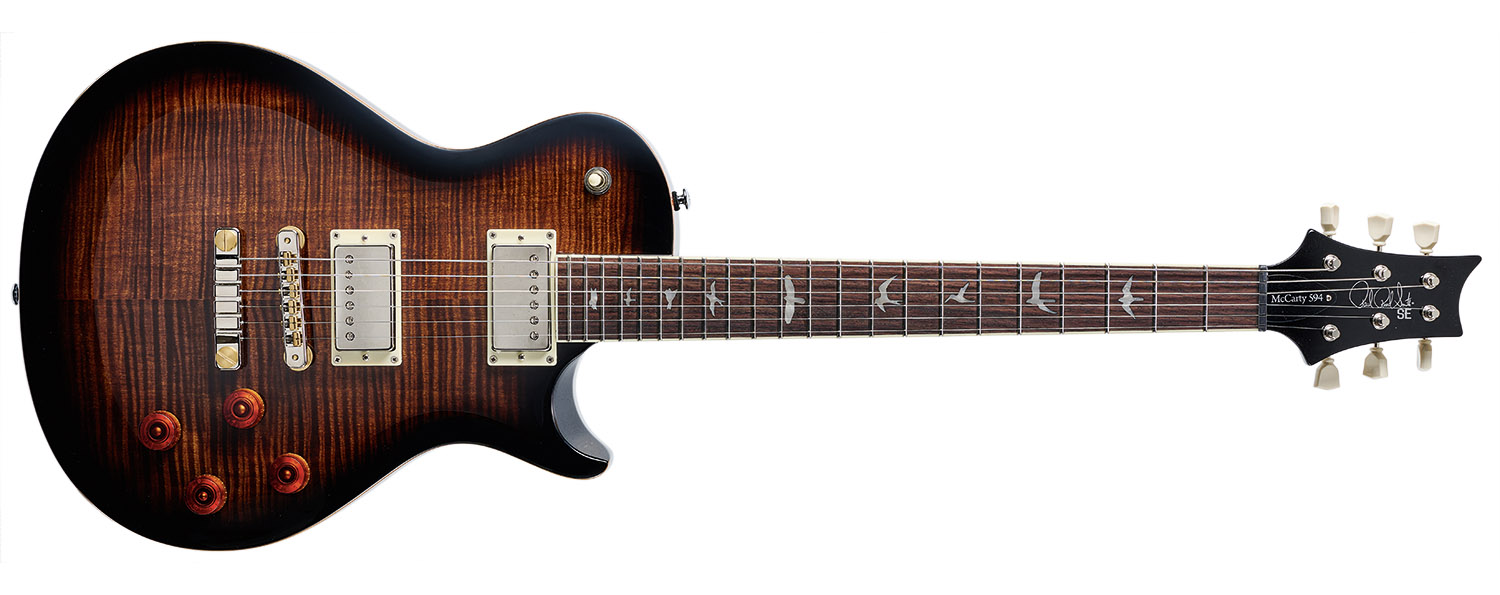
Verdict
This is a cracking pair of Singlecuts. From the classic ‘right’ weight to the well-balanced, not over-egged ’buckers and the useful single-coil voices, it’s hard to find fault. The craft is excellent, there’s not a hair out of place and both play exceedingly well.
The neck profiles don’t quite nail the USA shape, but the quite large, rounded feel here really suits the style. The gloss polyurethane finish does stop them feeling like old vintage classics, but they avoid feeling generic and certainly don’t sound it, especially considering the prices.
We would welcome some classic opaque finishes on the Standard as the three-piece plain mahogany body construction is clearly visible in this Sunburst finish and does look a little cheap. But that really didn’t stop us playing the heck out it. In fact, style aside, our only dilemma would be which one we’d buy.
Specs
PRS SE McCarty 594 Singlecut
- PRICE: $949 / £1,049 (inc gigbag)
- ORIGIN: Indonesia
- TYPE: Single-cutaway solidbody electric
- BODY: Mahogany with ‘shallow violin’ carved maple top w/flame maple veneer and natural edge ‘binding’
- NECK: Multi-ply mahogany, pattern vintage profile, glued-in
- SCALE LENGTH: 625mm (24.594”)
- NUT/WIDTH: Friction reducing/ 43.67mm
- FINGERBOARD: Bound rosewood, white pearloid ‘old-school’ bird inlays, 254mm (10”) radius
- FRETS: 22, jumbo
- HARDWARE: PRS 2-piece bridge and tailpiece, vintage-style (non-locking) tuners, nickel-plated
- STRING SPACING, BRIDGE: 51.5mm
- ELECTRICS: PRS 58/15 LT ‘S’ Treble and Bass humbuckers (bridge); 3-way toggle pickup selector switch, individual pickup volume and tone (with pull-switch partial coil-split)
- WEIGHT (kg/lb): 3.82/8.4
- OPTIONS: Colour only
- RANGE OPTIONS: Other Singlecuts are the SE Mark Tremonti with vibrato (£969), the semi-hollow SE Zach Myers (£979) and the SE Starla Stoptail (£710). The USA-made S2 line-up has the lone McCarty 594 Singlecut at £2,239, also available in the top-tier Core USA range from £4,360, along with the Mark Tremonti Signature from £4,085
- LEFT-HANDERS: No
- FINISHES: Black Gold Burst (as reviewed), Faded Blue, Vintage Sunburst – high gloss polyurethane
PRS SE McCarty 594 Singlecut Standard
- PRICE: $829 / £899 (inc gigbag)
- ORIGIN: Indonesia
- TYPE: Single-cutaway solidbody electric
- BODY: Mahogany with ‘shallow violin’ carved top and bound edge
- NECK: Multi-ply mahogany, pattern vintage profile, glued-in
- SCALE LENGTH: 625mm (24.594”)
- NUT/WIDTH: Friction reducing/ 43.67mm
- FINGERBOARD: Bound rosewood, white pearloid ‘old-school’ bird inlays, 254mm (10”) radius
- FRETS: 22, jumbo
- HARDWARE: PRS 2-piece bridge and tailpiece, vintage-style (non-locking) tuners, nickel-plated
- STRING SPACING, BRIDGE: 51.5mm
- ELECTRICS: PRS 58/15 LT ‘S’ Treble and Bass humbuckers (bridge); 3-way toggle pickup selector switch, individual pickup volume and tone (with pull-switch partial coil-split)
- WEIGHT (kg/lb): 3.6/8
- OPTIONS: Colour only
- RANGE OPTIONS: See SE McCarty 594 Singlecut
- LEFT-HANDERS: No
- FINISHES: McCarty Tobacco Sunburst, Vintage Cherry – high gloss polyurethane
- CONTACT: PRS

Dave Burrluck is one of the world’s most experienced guitar journalists, who started writing back in the '80s for International Musician and Recording World, co-founded The Guitar Magazine and has been the Gear Reviews Editor of Guitarist magazine for the past two decades. Along the way, Dave has been the sole author of The PRS Guitar Book and The Player's Guide to Guitar Maintenance as well as contributing to numerous other books on the electric guitar. Dave is an active gigging and recording musician and still finds time to make, repair and mod guitars, not least for Guitarist’s The Mod Squad.
“It holds its own purely as a playable guitar. It’s really cool for the traveling musician – you can bring it on a flight and it fits beneath the seat”: Why Steve Stevens put his name to a foldable guitar
“Finely tuned instruments with effortless playability and one of the best vibratos there is”: PRS Standard 24 Satin and S2 Standard 24 Satin review
